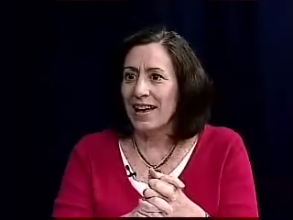
Understanding and Responding to the Needs of Children After Large-Scale Disasters
Course Description:
As communities across the country are planning and preparing their responses to large-scale disasters (natural, chemical, biological, radiological, nuclear, explosive), special attention needs to be paid to populations considered at high-risk for negative consequences. One of the highest risk groups is children. By understanding the emotional needs of children in the face of these traumatic events, preparations can be made that will improve outcomes and promote resilience.
Disasters can leave children feeling frightened, confused, and insecure. Whether a child has personally experienced trauma, has merely seen the event on television, or has heard it discussed by adults, it is important that healthcare professionals be informed and ready to help if reactions to stress begin to occur.
Children may respond to disasters by demonstrating fears, sadness, or behavioral problems. Younger children may return to earlier behavior patterns, such as bedwetting, sleep problems, and separation anxiety. Older children may also display anger, aggression, school problems, or withdrawal. Some children who have only indirect contact with the disaster but witness it on television may develop distress.
This course will describe how children may respond to traumatic events, with a focus on CBRNE incidents. Ideas for interventions, including a new model of Psychological First Aid will be presented. Finally, recommendations for preparation considerations will be explored.
Note: This course was originally delivered as a satellite broadcast.
Target Audience
Academic Faculty/Staff, Federal Government Employees, State Government Employees, Local Government Employees, Non-Government Employees and Students
Learning Objectives
- Discuss at least three reactions children may have after a traumatic event
- List at least two ways that CBRNE events may increase concerns for children and their caregivers
- Describe the components of Psychological First Aid important to increasing resilience in children after traumatic events
- Discuss a continuum of care model for children from triage to evidence-based interventions after traumatic events
Instructor:

Robin H. Gurwitch, PhD
Professor, Department of Pediatrics, University of Oklahoma Health Sciences Center
National Center for School Crisis and Bereavement
National Child Traumatic Stress Network
Dr. Robin Gurwitch, a Clinical Professor in the Department of Pediatrics at the University of Oklahoma Health Sciences Center, is a Clinical Child Psychologist and Marriage and Family Therapist. She is the Director of the A Better Chance Program for children with prenatal substance exposure as well as the Program Coordinator for the National Center for School Crisis and Bereavement. Dr. Gurwitch also serves as a program manager for the Terrorism and Disaster Branch of the National Center for Child Traumatic Stress. Dr. Gurwitch received her PhD in Clinical/Medical Psychology from the University of Alabama at Birmingham. She completed her internship in Pediatric Psychology at Rush-Presbyterian-St. Luke's Medical Center in Chicago and a fellowship in Child and Family Psychology at the University of Texas Medical Branch in Galveston. Dr. Gurwitch’s areas of special interest are the impact of terrorism, disaster, and trauma on children and families; prenatal substance exposure; and interventions with young children who are considered at-risk for behavioral, social, learning and developmental difficulties.
Available Credit
- 2.00 Participation/CETulane Professional and Continuing Education (PaCE) awards 2.00 hour(s) of credit for completing Understanding and Responding to the Needs of Children After Large-Scale Disasters
Price
Required Hardware/software
System Settings
This course is designed to work most effectively if your computer and internet connection meet certain minimal requirements. This course can be accessed using a Windows 10 PC or a Mac with High Sierra1, Mojave, or Catalina. Pop-up blockers should be disabled when viewing the course. Internet Explorer 11 (for Windows 10), or the current version of Google Chrome, Mozilla Firefox, or Apple Safari (for Windows 10 and or Mac) is required. Many of our courses require Java and JavaScript enabled.
Links to External Websites
Links to websites outside this course will open in a new window or tab. Some browsers may minimize the course window. If this occurs, maximize the course window to return to the course.
Adobe Acrobat Reader (for desktops and laptops)
Adobe Acrobat Reader is required to access some documents in this course. If you need to download a free copy of Acrobat Reader, click here.
Internet Connection Speed
A minimum download speed of 1.5 Mbps is recommended for an optimal experience, which is commonly the speed associated with a basic DSL or a cellular/satellite connection. A faster connection, such as cable or fiber service, with further enhance your online experience. A Wi-Fi connection is generally acceptable, but it is dependent upon one of the two services mentioned above. You can check your internet connection speed at http://www.speedtest.net/.

 Facebook
Facebook X
X LinkedIn
LinkedIn Forward
Forward